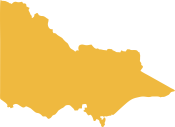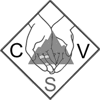This page provides a very brief description of how Aboriginal peoples were forced off their land and how their culture was suppressed during stages of colonisation of Victoria. It aims to provide some background on how cultural heritage has been retained and is being restored within current-day Traditional Owner communities.
Colonisation, Missions and Reserves
Before the colonisation of Victoria, Aboriginal people lived in family groups linked to larger language groups with distinct territorial boundaries. There were around 38 Mobs living in the area now called Victoria. Each Mob had their own kinship systems and practices relating to law, education, culture and resource management.
Colonisation began in Victoria in 1834 with the establishment of the first permanent settlement in Portland. In 1835 a group of colonists from Van Diemen’s Land set up the Port Phillip Association with a view to purchasing large tracts of land from Aboriginal peoples around Port Phillip Bay. John Batman signed two treaties for large parcels of land in Melbourne and Geelong but these were declared invalid by the New South Wales Governor just two months later.
Settlement spread despite the lack of Treaty or other agreement, resulting in the inevitable displacement of and conflict with Aboriginal peoples. A Chief Protector of Aborigines, based in Port Phillip, was appointed in 1838 but to little effect as business and government figures continued to encourage settlers to use and take land to expand the economy of the colony.
Victoria formally became a separate colony from New South Wales in 1851. Gold was discovered in central Victoria in the same year, leading to a huge population growth from immigration, which rapidly accelerated the displacement of Aboriginal peoples from their land. In 1859 the Victorian Government set up the Central Board for the Protection of Aborigines (CBPA) and in 1869 passed the Aborigines Protection Act. This legislation gave the CBPA the power to control many fundamental aspects of Aboriginal lives including where they could live, work, travel and who they could marry. It was fundamental in establishing the missions and reserve system where majority of Aboriginal people were then forced to live.
Missions were run by churches and reserves were typically run by the government. Both had strict rules banning the use of language, tradition and ceremonies with harsh punishment for breaking rules. This was intended to suppress Aboriginal cultures in order to assimilate Aboriginal people into the colonial society.
In 1886, the Aborigines Protection Act was amended to exclude half-caste aboriginal people from the reservation system. This lead to removal of many children from their own families to be placed in colonial homes, often as domestic servants. Adults often had nowhere else to go and would stay in the area of the mission to be close to their families. However, the dramatic drop in population of the missions due to this change, made many of the reserves unviable and they progressively closed down through the early 1900’s.
Many of the missions were handed back to the Traditional Owners after they were closed. As a result they became centres for communities that a large part of today’s Aboriginal Victorian peoples have a connection to. While they started out as places of suffering, control and cultural denial, they became symbols of resilience and eventually nurtured the restoration of community and culture.
Protection of Cultural Heritage
Due to the prolonged dislocation of Traditional Owners from their country and the enormous disturbance of that country through agriculture, mining, forestry and settlement, a great deal of the cultural heritage associated with the landscape has been lost or destroyed. Remaining values are now protected by law (The Aboriginal Heritage Act 2006) and a system of Cultural Heritage Assessments is in place to ensure values are identified and protected prior to development works that might damage them. Cultural artefacts continue to be found regularly through Traditional Owner assessments or survey processes or by individual reports. Once identified, Traditional Owners determine the value and significance of the find and determine the degree of protection required.
CSV supports the protection of cultural values at climbing venues in the manner that Traditional Owners deem to be most appropriate.
Cliffcare has a good information page on the identification of cultural artefacts here: https://www.cliffcare.org.au/cultural-heritage
Significant Places
Some places have such particular significance to Traditional Owners that activities such as climbing could be disrespectful or damaging. There are a number of things that can determine the significance of places, some of which may only be known to Traditional Owners themselves. Significant places might be ceremonial, spiritual, meeting or trading places, social places, hunting or fishing grounds etc.
Knowledge of many of the most significant places has been preserved through stories and education of each generation. Other significant places have been inferred from the existence of significant tangible values or physical evidence such as artwork, artefacts or scars. Significant places might also be inferred from a combination of tangible and intangible values in one area that would indicate a prolonged use or range of uses.
CSV recognises that Traditional Owners are the best people to determine the significance of places and whether climbing is appropriate in them.


